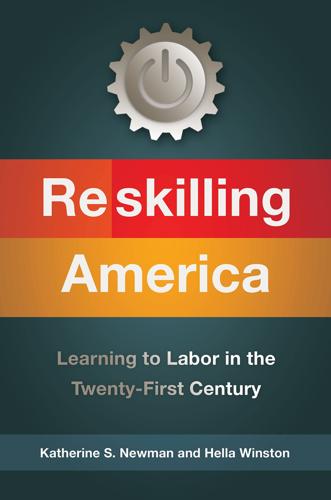
Reskilling America: Learning to Labor in the Twenty-First Century
by
Katherine S. Newman
and
Hella Winston
Published 18 Apr 2016
Everyone should be able to seek a spot among the ranks of the talented tenth. Accommodating to inequality—as Washington was prepared to do in the name of economic security—was unacceptable. Upward mobility into the professions was the path toward respect. White America did not see the world so differently. Class intruded everywhere. Blue-collar work paid well, at least during the heyday of industrial unions, but it was not a source of pride. In David Halle’s book on New Jersey chemical company employees, America’s Working Man, a line worker instructs his eight-year-old kid to wave the father’s paycheck in front of his second-grade teacher and ask whether she had anything to say for herself.
…
Moreover, it draws upon a different kind of prejudice: biases against careers that utilize the kind of intelligence and skill it takes to program a huge high-speed precision lathe, determine the cause of a plumbing problem, or spot a mistake in a drug dose in a hospital ward. This kind of talent built a booming nation and was once the bedrock of a proud blue-collar working class, whose unions organized for good wages. As a country, we stood in collective admiration of their achievements written in stone, glass, and metal. The United States was a mighty industrial power in the past and could be one again, but not until we find it in ourselves to respect what workers produce as much as we admire lawyers, doctors, or Silicon Valley computer wizards
…
States were encouraged to spend federal funds on vocational education for students who had dropped out of college, workers who needed training or retraining, and individuals with academic, socioeconomic, or other handicaps.26 It was this very association of vocational training with disadvantage, especially urban black and rural white poverty, that would saddle it with a remedial taint. That valence was reinforced by the association of practical training with blue-collar work in a country fixated on white-collar employment as a mark of upward mobility. While other countries linked skilled manufacturing to international trade dominance with almost nationalist zeal, Americans pushed the blue-collar training agenda into an educational corner and virtually ensured that anyone who ventured there would be tarred by stigma.

The New Urban Crisis: How Our Cities Are Increasing Inequality, Deepening Segregation, and Failing the Middle Class?and What We Can Do About It
by
Richard Florida
Published 9 May 2016
I also identified two less advantaged classes that together made up the rest of the workforce: the larger and much-lower-paid service class, roughly 60 million workers, about half of the workforce, who toiled in low-paid food prep, retail, and personal service jobs, and the shrinking ranks of the blue-collar working class, who worked in factories, construction, the trades, and transportation and logistics and constituted about one-fifth of the workforce. The cities and the larger metropolitan areas that were most successful economically, I argued further, were those that excelled at what I called the “3Ts of economic development”: technology, talent, and tolerance.
…
The service class is concentrated in a tight band outside downtown Boston, continuing north past Marblehead and south to Quincy along the coast, forming two big clusters at the northern and southern fringes of the metro. Nine of the ten most concentrated service-class neighborhoods in the metro are in the city of Boston, mainly in South and East Boston around historically black Roxbury and near Logan Airport. Slightly less than 15 percent of the region’s workers belong to the blue-collar working class, well below the national average—and a stark change from the middle of the twentieth century, when Boston was a preeminent manufacturing center. Figure 7.7: Boston Source: Map by Martin Prosperity Institute, based on data from the US Census. Washington, DC’s, creative class makes up nearly half the metro’s workforce, one of the highest levels in the country, spanning large areas of the city and the suburbs (see Figure 7.8).
…
The strategies that politicians typically offer up for rebuilding the middle class will not even come close to solving the problem. Many, most notably Trump himself, like to talk about bringing middle-class manufacturing jobs back to America, for instance. But only 20 percent of Americans do blue-collar work of any sort today, and that includes huge numbers of construction and transportation workers. Just 6 percent of workers actually make things in factories. Even if we were able to bring large numbers of manufacturing jobs back, and even if the much-publicized successes with advanced and so-called artisanal manufacturing continue apace, these new jobs will still amount to just a drop in the bucket.

Framing Class: Media Representations of Wealth and Poverty in America
by
Diana Elizabeth Kendall
Published 27 Jul 2005
FADING BLUE-COLLAR FRAMING: OUT OF WORK OR UNHAPPY AT WORK Twenty-first-century media representations of the working class have described the diminished political and economic clout of the laboring class as compared to the heyday of unionized blue-collar workers’ earning relatively high wages with good benefits and job stability. News reports now focus on the “fading” of blue-collar work due to job loss, the threat of cheap immigrant labor, the outsourcing of jobs to other countries, the downgrading of blue-collar work generally, and the number of working-class families joining the ranks of the working poor or unemployed. A political cartoon summed up the problems of the formerly well-paid union factory worker by showing a man wearing a hard hat and work shirt sitting across a desk from a young woman at a computer.
…
Congressional investigations, governmental actions, and violence during labor strikes provided reporters with fodder for numerous articles on the working class and its problems; however, the focus of many stories remained primarily on labor organizers and what Puette refers to as a “cartoon image” of labor unions—one that portrayed the “worthless, unproductive, overpaid blue-collar work force, which is considered the unhappy but inevitable result of unionization.”33 In articles ranging from coverage of the 1920 Palmer Raids (in which federal agents arrested more than five thousand people to break a nationwide strike)34 to news reports about passage of the Taft-Hartley Labor Act in 1947 (which curbed union strikes),35 reporters had ample opportunity to inform their readers about key issues facing workers.
…
With regard to the impoverished class, classic films like Gone with the Wind popularized the phrase “po’ white trash”; since the 1980s, the media have employed the whitetrash caricature to portray blue-collar and lower-income white-collar families. The term has also been bandied about in television situation comedies like the now-syndicated Roseanne, which features a working-class family that prides itself on its “trashy” origins and behavior. In an episode titled “White Trash Christmas,” Roseanne Conner (Roseanne Barr), a blue-collar working mother, and her husband, Dan (John Goodman), snub their neighbors by putting up gaudy Christmas decorations outside their house. In another episode, Roseanne sits in the garage on a favorite sofa the family discarded when they purchased a new one. Roseanne is laughing at an episode of The Beverly Hillbillies, a “whitetrash-made-good” show, which she is watching on the family’s discarded TV set.
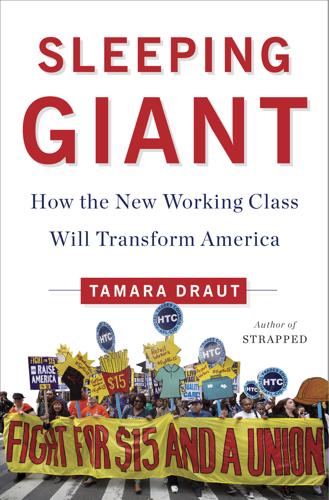
Sleeping Giant: How the New Working Class Will Transform America
by
Tamara Draut
Published 4 Apr 2016
As companies shuttered factories in the United States and income inequality began its steady ascent, jobs for home health aides, child-care workers, fast-food workers, janitors, and waiters swelled to accommodate major cultural and social trends, including the growing disposable income of the upper echelon and the time crunch facing all workers, but especially those who have young children or aging parents to care for. The New Big Jobs: Feeding, Serving, Caring, and Stocking America The old leviathan of the blue-collar working class, the auto industry, is commonly referred to as the Big Three, meaning GM, Ford, and Chrysler. In their prime, these companies symbolized American ingenuity, prosperity, and industrial hegemony. Despite major setbacks, including bankruptcy filings, the Big Three automakers have rebounded, though employing a fraction of the workers they did at their peak.
…
Various surveys find that jobs in retail and food service rank very low in terms of job satisfaction.12 The Blue-Collar Jobs In the top-ten list of occupations providing the largest number of jobs in our country, two of the ten (laborers/material movers and janitors) could be described as traditional blue-collar work, that is, physical labor done overwhelmingly by men. But unlike four decades ago, these jobs aren’t on the assembly line or factory floor. Today over 2 million people in the new working class are employed as janitors or cleaners, earning an average hourly wage of $10.73.13 Nearly seven out of ten of these jobs are held by men.
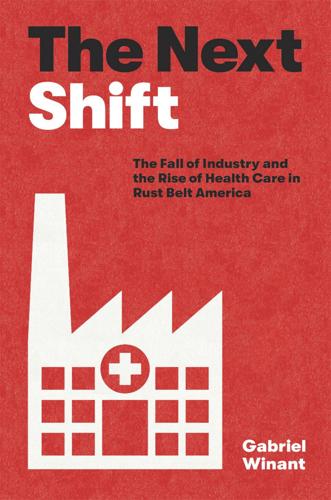
The Next Shift: The Fall of Industry and the Rise of Health Care in Rust Belt America
by
Gabriel Winant
Published 23 Mar 2021
In 1950, the historical high point of manufacturing, the pattern of employment for African American men appears similar to that of white men: an overwhelming majority of Black wage workers were men, as with white wage workers; two-thirds of employed Black men worked in manufacturing, construction, mining, or transportation and warehousing, as with employed white men. African American men ranked lower in these industries and would find them harder to live off for long—but they depended on blue-collar work for subsistence to the same degree that white male workers did at this moment of industrial high tide. The more distinctive pattern in Black employment, however, occurred for women. African American women found work in hospitals, laundries, and food and drink service, but a pink-collar world of jobs as secretaries, telephone operators, saleswomen, and teachers was largely closed to them.
…
Still, an enormous 16 percent of the region’s jobs were in the primary metals industry, and nearly an outright majority in the area’s overall industrial sector, much of which depended on steel.10 In the 1960s the decline in industrial employment began in earnest. Between 1960 and 1970, the number of workers employed in metal manufacturing declined from 162,514 to 128,142. Blue-collar work overall fell from 47 percent of the labor market to 30 percent in the space of this decade. This decline shook out unevenly: craftsmen and foremen, the nearly all-white upper echelon of blue-collar workers, numbered 138,300 in 1950 and declined only to 134,845 by 1970. The number of operatives—who made up the main rank of blue-collar employees, encompassing semiskilled machine workers—fell from 173,428 to 111,059 over the two decades, although the bulk of the decline was in the 1950s and mostly in industries other than steel.
…
Seniority in the mill accrued within a worker’s department rather than plant-wide, meaning that the confinement of African Americans to undesirable departments institutionalized the pattern of who was likely to be hired last and laid off first, as well as who would be exposed to the most dangerous and difficult work. A 1968 study by the Equal Employment Opportunity Commission found Black workers “almost twofold over-represented in the lowest classification and equally disproportionately underrepresented in the most skilled blue-collar work.” As historian John Hinshaw notes, when National Tube Works in McKeesport laid off 11.5 percent of its workforce in 1967, it “furloughed 38 percent of its Black workers. For many white workers, the labor pool was a last resort in hard times, whereas for Blacks it was often the only job they would ever have.”13 A scene in August Wilson’s play Two Trains Running, set in 1969, captures this contraction in Black employment.
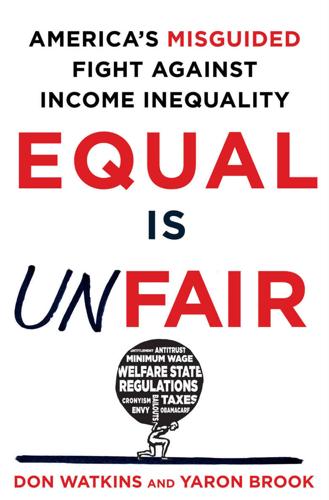
Equal Is Unfair: America's Misguided Fight Against Income Inequality
by
Don Watkins
and
Yaron Brook
Published 28 Mar 2016
Take someone who, despite his best efforts, struggles with academic work. There are still enormous opportunities for skilled blue-collar work—for mechanics, electricians, plumbers, welders, and the like. These are well-paying jobs that can be deeply fulfilling, and yet millions of such jobs are going unfilled right now because there aren’t enough workers trained to do them. As former Dirty Jobs host Mike Rowe has argued, the main reason for this is that “our society [has] waged . . . a sort of cold war on [blue-collar] work. . . . [L]ook at the way those industries are portrayed in pop culture. Show me a plumber, and I’ll show you a 300-pound guy with a giant butt crack and a tool belt.

Ghost Work: How to Stop Silicon Valley From Building a New Global Underclass
by
Mary L. Gray
and
Siddharth Suri
Published 6 May 2019
The Foxconn factories that make iPhones allegedly replaced 60,000 humans with robots in 2016. Amazon’s 20 fulfillment centers reportedly deployed 45,000 robots to work alongside 230,000 people that same year. Yet these numbers confound how many jobs are created by automation. And the media coverage of AI’s impact on full-time blue-collar work can distract us from the rapid growth of a new category of human workers to complement or tend to automated manufacturing systems when AI hits its limits. In the past 20 years, the most profitable companies have slowly transitioned from ones that mass-manufacture durable goods, like furniture and clothing, to businesses that sell services, like healthcare, consumer analytics, and retail.
…
See application programming interface (API) Apollo 13, 52 application programming interface (API) circumventing, 74 collaboration, 178–80 definition, xiv growth of, 169 head count on, 103–4 hiring via, 4–6 improvements to, 138–39 inequality of power in, 91–93 limitations of, 170–71, 174 logistics of, xiv, 62 networking, 127 thoughtlessness of, 67–68 training and trust, 71–72 articulation work, 238 n1 artificial intelligence (AI), 231 n41 advancement of, 176–77 humans, dependency on, ix–x, xviii–xxiii, 231 n41 misconceptions about, 191–92 natural language processing, 30 rise of, 6–8 training, xxiii, 6–8, 16, 170, 222 n11 Asra, 106–8 assembly lines, 41–42 automation cost shifts from, 173–77 human labor and, xviii–xxiii, 58–59, 176–77 machinery use in Industrial Revolution, 42–45 paradox of automation, 170 projections for, 243 n5 autonomy vs isolation, 80–84 Avendano, Pablo, 142, 143, 145 Ayesha, 81, 219 n8 B B Corps, 147, 164 bait-and-switch strategy, 83 Bangalore, xi, 17, 76, 219 n5, 238 n7 Bangladesh, 193–94 Beckett, Samuel, 29 benefits APIs, 171 at Caviar, 142 at CrowdFlower, 35 disappearance of, 98, 156 at DoorDash, 157–58, 162 full-time employment, 47, 48, 49, 60 at LeadGenius, 159–60 permatemps (Microsoft), 56–57 recommendations for, 189–92 statistics on, xxiii Uber lawsuit, 146 as worker cost, 32 See also employment, reasons for Bezos, Jeff, 2–3, 90, 135–37, 222 n5 Biewald, Lukas, 35 Bing, xii Blight, David, 226 n2 blue collar work. See unskilled work British Airways, 54–55 Bureau of Labor Statistics, xxiv–xxv, 158 business process outsourcing (BPO), 17, 55, 87 Butler, Elizabeth Beardsley, 228 n9 C camelback couch, xiii “campaigns” (LeadGenius), 150 captioning, 28, 29, 153–55, 225 n29 career ladder. See advancement Carmela, 112–13 Catalant, xxv Caviar, 141–43, 144, 145 chess, 5–6 child labor, 42, 43, 46, 164, 229 n21 Civil War, 40–41 classification algorithm, xiii CloudFactory, xv, 140–41, 143, 147, 149, 164, 239 n1 Coase, Ronald, 36, 69, 186 collaboration, 121–39 effects of, 133–37, 173–74 flash teams, 182–83 improvements for, 178–79 on LeadGenius, 150, 151, 160, 240 n11 letter to Bezos, 135–37 with platforms, 169 reasons for, 137–39, 233 n6 sharing work, 128–31 social environment, 132–33 transaction cost reduction, 124–28 workplace, 121–23, 164 college education, xxix, 50, 97, 98, 101, 190 commercial content moderation.
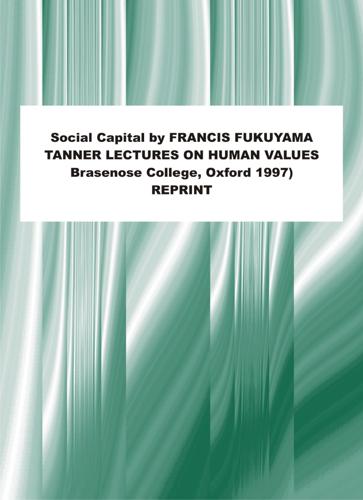
Social Capital and Civil Society
by
Francis Fukuyama
Published 1 Mar 2000
The degree to which power has been moved down to the bottom layer of the organization is symbolized by the famous cord at each workstation in Toyota’s Takaoka assembly plant, which allows each individual blue-collar worker to stop the entire assembly line if he or she sees a problem in the production process. The cord constitutes what game theorists would call a unit veto, by which each actor can sabotage the entire group’s effort. It is obvious that this kind of authority can be safely delegated only under certain conditions : the blue-collar work force has to be adequately trained to be able to undertake the management skills formerly performed by white-collar middle managers, and they have to have a sense of responsibility to use their power to further group rather than individual ends. The post-Fordist factory requires, in other words, a higher degree of trust and social capital than the Taylorite workplace with its comprehensive workplace rules.

Arriving Today: From Factory to Front Door -- Why Everything Has Changed About How and What We Buy
by
Christopher Mims
Published 13 Sep 2021
There are a great many paradoxes inherent in automation of ports and, indeed, in any portion of a supply chain, and this particular battle at the port of L.A. is worth lingering over because it so perfectly embodies all of them at once. The first paradox of automation is that it can actually increase the bargaining power of some portion of the workers within an industry. The ILWU is famous—in some circles, infamous—for extracting extraordinarily high wages from employers for what is mostly blue-collar work. In part, this is because automation has the overall effect of making labor an ever-smaller portion of the expense of running a port, even if individual workers are seeing their wages increase. This can happen when the total number of workers shrinks, and it can happen even when the total number of workers grows, as long as the operating expenses of all the machinery around them grows faster.
…
It was, by his account, a “democratic Taylorism” in which workers felt empowered to come up with new ways to be more productive, without doing anything they felt was unsafe, unsustainable, or excessively unpleasant. Accounts of how kaizen was practiced at Toyota itself depict a workplace in which unionized employees with significant leverage were made a part of the problem-solving community that governed Toyota’s entire supply chain. At least in its heyday, it allowed these workers to combine their blue-collar work with management-style ownership and thinking about how to improve the production of vehicles. But for lean production systems to make work better and not just more efficient, it’s apparent that workers must either participate directly or feel that their managers are fairly representing them.

How I Invest My Money: Finance Experts Reveal How They Save, Spend, and Invest
by
Brian Portnoy
and
Joshua Brown
Published 17 Nov 2020
She is quoted regularly in numerous publications and has also appeared on CNBC, Hardball, AC360, and NPR. The concept of investing and saving isn’t something I learned until my late-20s. Our family didn’t have money to invest. Thankfully, I was taught to invest in myself. My dad and mom were good blue-collar working-class people who didn’t have a high school education. My dad’s safety net was his small Navy pension that started when he was 38 years old, when I was only six years old. His encore career as a baker entailed working 364 nights a year in his own donut shop. We were never hungry and I never felt like we were poor.
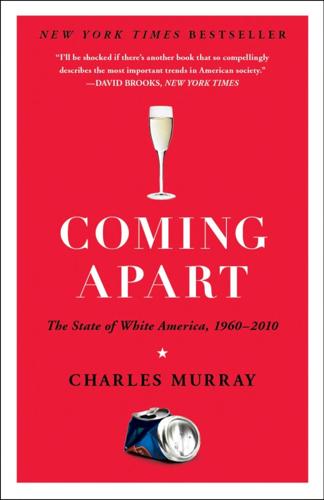
Coming Apart: The State of White America, 1960-2010
by
Charles Murray
Published 1 Jan 2012
By 2000, 15 percent of all jobs in Manhattan were in the financial sector, another 15 percent fell into the category of “professional, scientific, and technical services,” and another 9 percent were in a category labeled simply “information.” That’s 39 percent of all jobs. That doesn’t mean blue-collar work wasn’t being done in Manhattan anymore. It just means that by the year 2000, people who lived in Manhattan south of the Nineties weren’t doing them. Instead, Manhattan south of the Nineties had turned into an abode for a highly educated, highly paid professional, managerial, and technical class.
…
Appendix A: Data Sources and Presentation 1. Cleveland, 1979. 2. Fischer and Hout, 2006, 253. Appendix C: Supplemental Material for the Chapter on Belmont and Fishtown 1. “Blue-collar professions” refer to high-skill blue-collar jobs that lend themselves to self-employment or have a natural career path to supervisory positions on blue-collar work sites. 2. This stipulation means that a person whose spouse has an AA degree or higher is not assigned to Fishtown even if both the husband and wife are in Fishtown occupations. 3. For databases that show a person’s years of completed education rather than highest degree completed, persons who have completed a thirteenth year of schooling are categorized as “no more than a high school diploma.”

The Rise and Fall of American Growth: The U.S. Standard of Living Since the Civil War (The Princeton Economic History of the Western World)
by
Robert J. Gordon
Published 12 Jan 2016
Farming has almost disappeared as an occupation, the share of blue-collar work has declined by one-third, and there has been an explosion of the share of service occupations as well as of managers and professionals. The share of professionals today is about the same as that of farm laborers in 1870, implying a tremendous change in working conditions along all dimensions, including physical difficulty, exposure to the elements, risk of injury or death, and educational qualifications.66 Throughout this book, we trace the gradual transition from unpleasant to pleasant work. If we describe farming, blue-collar work, and domestic service as unpleasant, then 87 percent of jobs in 1870 were unpleasant.
…
Consider the greatly diminished disutility of a farmer who now plants his field in an air-conditioned and GPS-equipped tractor, contrasting it with the 1870 farmer guiding a plow behind a horse or mule. This approach interprets the improvement in the standard of living by viewing members of each household both as consumers and as workers. The greatly increased quality of work includes the shift from the physical strain and danger of manual blue-collar work to air-conditioned work in offices, hotels, and retail stores. It includes such improvements of quality as increased flexibility and control over one’s own work hours, a contrast to the highly regimented nature of assembly work in the heyday of manufacturing. Likewise, the “quality of youth” has been improved by the end of child labor and the advance of educational attainment, captured by the sharp contrast between the children of 1900 guiding mules in dark and dangerous coal mines and the pampered teenagers of 2015 texting, tweeting, and playing games on multiple electronic gadgets.
…
A crude way to summarize the transition toward lessened disutility of work is to tally the share of total employees engaged in relatively disagreeable work, whether outside, exposed to the elements; involving heavy lifting or digging; or featuring monotonous repetitive motions on the assembly line. For this purpose, we will include all those engaged in farming, blue-collar work, or domestic service as having “unpleasant” jobs and everyone else as having “pleasant” jobs. This two-way classification does not allow for nuances—for instance, that cashiers in retail stores may have jobs that are as repetitive and boring as those of assembly line workers, whereas some craft workers in manufacturing or construction create objects of which workers can be proud.
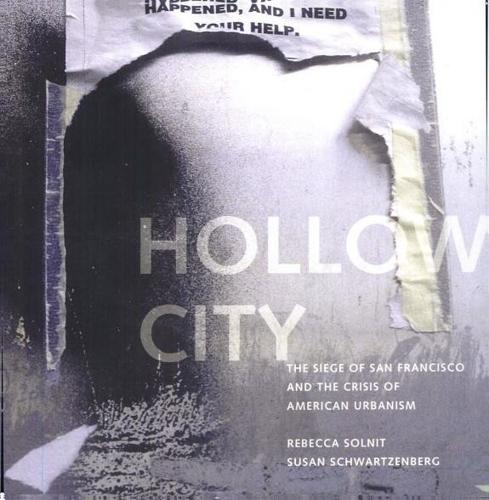
Hollow City
by
Rebecca Solnit
and
Susan Schwartzenberg
Published 1 Jan 2001
is this history, the differences more or less middle literally gets work condos gleaming amid which of the city can only press up against important to discuss another factor in The civility abil- have written about the relations between those in the cafe of redevelopment and those it's more than that a lot of people have recently arrived in is wealthy; their cumulative effect of between Some of but we have artists as well as developers to thank for the nouveaux riches of San Francisco refuse to cohabit SKID MARKS ON THE SOCIAL CONTRACT with the poor, the needy, the recent arrival from Seattle borhood complains "invites these where I pay clientele trial and even with blue-collar work. (A festive, who bought a loft condo in an industrial neigh- that the Maritime Hall, a longtime nightclub nearby, people not just to the Maritime but to a hell of a lot of become more 121 money to live.")^ my neighborhood, As the Haight-Ashbury has affluent, tolerance has declined for social services and their of drug users, homeless people and runaway kids.

Last Best Hope: America in Crisis and Renewal
by
George Packer
Published 14 Jun 2021
As the industrial age waned, the hero of labor became the working stiff, paying dues to a sluggish union, bored and trapped by his job, but still able to take its existence for granted, like the Chicago steelworker who opens Studs Terkel’s 1974 oral history, Working. He isn’t afraid to ask his abusive foreman, “Who the hell are you, Hitler?” Those were the last years of secure blue-collar work, and the beginning of wage stagnation in the postindustrial service economy. The archetype of the new working class was the Walmart store greeter: fifty or fifty-five years old, having lost a better-paying factory job, making ten dollars an hour, in poor physical shape, on her feet all day, forced to be cheerful with the shopping public.
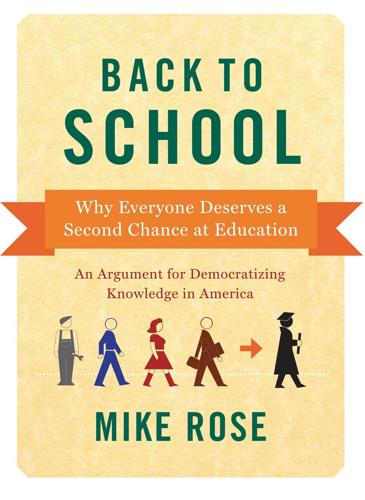
Back to School: Why Everyone Deserves a Second Chance at Education
by
Mike Rose
Published 17 Sep 2012
Upon entrance, students were placed in one of these on the basis of their previous academic records or a measure of ability, typically an IQ score. The curriculum directed the students toward a four-year college or university, possibly a community college; toward service or lowlevel managerial careers; or into blue-collar work. The curriculum also contributed powerfully to the school’s social order. The college-bound were in student government, edited the newspaper and the annual, and at year’s end had a thick list of activities under their class photographs. I swear, looking back on it all, that the college prep crowd walked around campus with an air of promise.

Fewer, Better Things: The Hidden Wisdom of Objects
by
Glenn Adamson
Published 6 Aug 2018
It is often seen as inadequate in comparison to powerful industrial processes, or, in more rarefied circles, compared to the conceptual investigations of fine art.1 When we casually dismiss craft as a vital factor in our lives, however, we miss out on many satisfactions. We also ignore and implicitly demean the skilled labor—the “blue-collar” work—that goes on in the background of many human endeavors. When many people hear the word “craft,” they think of humble, decorative things: pots, baskets, or macramé plant hangers. But if we consider “craft” in its active form, treating it as a verb rather than a noun, we immediately realize it is much, much broader than that.

Internet for the People: The Fight for Our Digital Future
by
Ben Tarnoff
Published 13 Jun 2022
The shipping container made it cheaper to transport goods by streamlining and mechanizing what had formerly been a time-consuming and labor-intensive process, and this in turn enabled companies to farm out their manufacturing operations to subcontractors in whatever parts of the world goods could be most cheaply produced. And what the shipping container has done to much blue-collar work, the internet has done to much white-collar work. It “has created a massive globalized reservoir of human labor power for companies to tap into, as much or as little as needed: the ‘human cloud,’” writes scholar Gavin Mueller. This human cloud includes the immense “back office” maintained by large tech companies, which use freelance and subcontracted workers in low-wage countries to categorize data sets so that machine learning algorithms can learn to detect patterns from them.

In the Age of the Smart Machine
by
Shoshana Zuboff
Published 14 Apr 1988
However, this historical trajectory of the blue-collar body does little to inform our understanding of what has been white-collar work and what it is likely to become. The evolution of white-collar work has followed a historical path that is in many ways the precise opposite of that taken by blue-collar work. Manufacturing has its roots in the work of skilled craft. In most cases, that work was successively gutted of the elements that made it skillful-leaving behind jobs that were simplified and routinized. An examination of work at the various levels of the management hierarchy reveals a different process.
…
Pierenkemper compares his own data to that of several other studies of white-collar employment at that time and concludes that "the evidence suggests that industrial white collar employees in the late nineteenth century were a distinct but heterogeneous group. They performed a broad range of tasks-at one extreme close to those of management, at the other difficult to distinguish from those of the blue collar work force. ,,47 The White-Collar Body in History 11 5 Another study documented the experiences of female clerks in the federal government during the later part of the nineteenth century. The testimony of one woman who worked as a clerk examining the accounts of Indian agents, reveals the range of her accountability: For years I worked faithfully. . . the work being brain work of a character that requires a knowledge not only of the rulings of this Department, but also those of the Treasury, Second Auditor, Second Comptroller, and Revised Statutes; demanding the closest and most critical attention, together with a great deal of legal and business knowledge. ,,48 The experiences of another clerk, Jane Seavey, have survived in her corre- spondence.
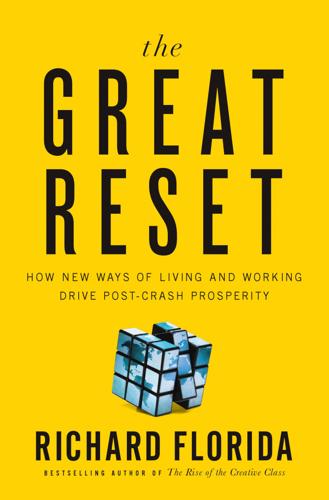
The Great Reset: How the Post-Crash Economy Will Change the Way We Live and Work
by
Richard Florida
Published 22 Apr 2010
Manufacturing cities and regions—the ones with the rusting steel beams and the pigeons roosting in the rafters—weigh most heavily on the minds of economists and policy makers. Will the lost jobs ever come back? Can they be replaced? Can we reclaim our industrial might? What’s really in store in those places? Chapter Twelve Death and Life of Great Industrial Cities There’s a long history of writers extolling the virtues of blue-collar work. From Leo Tolstoy’s Levin finding happiness alongside his field hands in Anna Karenina to Robert Pirsig’s Zen and the Art of Motorcycle Maintenance in 1974, our greatest intellects have repeatedly been surprised to discover the simple joys of hard physical labor. In his best-selling book Shop Class as Soulcraft, Matthew Crawford, a University of Chicago philosophy PhD, walked away from his knowledge-work career in a boring think-tank job and, following in Pirsig’s footsteps, found far more satisfying work in a motorcycle repair shop.

Hillbilly Elegy: A Memoir of a Family and Culture in Crisis
by
J. D. Vance
Published 27 Jun 2016
Ultimately, the verdict of his own son is damning: “Daddy says he’s worked in his life. Only thing Daddy’s worked is his goddamned ass. Why not be straight about it, Pa? Daddy was an alcoholic. He would stay drunk, he didn’t bring food home. Mommy supported her young’uns. If it hadn’t been for Mommy, we’d have been dead.”15 Alongside these conflicting norms about the value of blue-collar work existed a massive ignorance about how to achieve white-collar work. We didn’t know that all across the country—and even in our hometown—other kids had already started a competition to get ahead in life. During first grade, we played a game every morning: The teacher would announce the number of the day, and we’d go person by person and announce a math equation that produced the number.
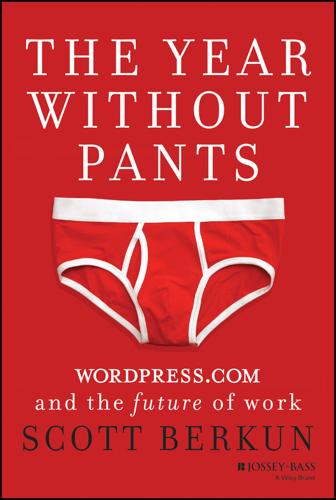
The Year Without Pants: Wordpress.com and the Future of Work
by
Scott Berkun
Published 9 Sep 2013
Through the last two centuries, work has become increasingly abstract, which of course, is, in some ways, progress. Fewer people (at least in the First World) are exposed to dangerous, backbreaking labor. But at the same time, we've lost the beneficial effects work used to have on our psychology. In Shopcraft as Soulcraft, a book about recovering the lost values of what we call blue-collar work, Matthew Crawford identifies how often we mock the emptiness of modern workplaces: “The popularity of Dilbert, The Office, and any number of other pop-culture windows on cubicle life attests to the dark absurdism with which many Americans have come to view their white-collar work.”2 It has been only in the past hundred years that work has become this way.

Heart: A History
by
Sandeep Jauhar
Published 17 Sep 2018
Surgical scars—most prominently a long track down the middle of his breastbone, a remnant of open-heart surgery—indicated that he’d had access to health care. His clean nail beds meant he had been well-off, at least well enough to take care of himself (or to pay others to take care of him). Callused hands generally suggest blue-collar work. My cadaver’s hands were smooth and polished. The feeding tube in his stomach implied his final days had been difficult, perhaps spent in a nursing home or some other fulltime care facility. The edema in his limbs pointed to congestive heart failure. And the bulge in his abdomen? Probably a pacemaker.
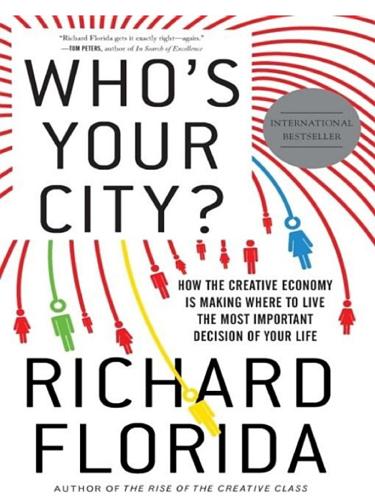
Who's Your City?: How the Creative Economy Is Making Where to Live the Most Important Decision of Your Life
by
Richard Florida
Published 28 Jun 2009
For most of human history migration has been involuntary. People moved out of necessity—to avoid war, escape political or religious persecution, or find work. Even as recently as the 1950s and 1960s most people—white-collar and blue-collar workers alike—moved to find jobs. Nobody had much choice, actually. Blue-collar work was heavily concentrated in cites that had grown up around natural resources and transportation hubs. White-collar workers were company men who went where their superiors told them to go. In the 1970s, IBM workers joked that their company name stood for “I’ve Been Moved.” There was much truth to that sentiment, and it applied to companies other than the computer giant.
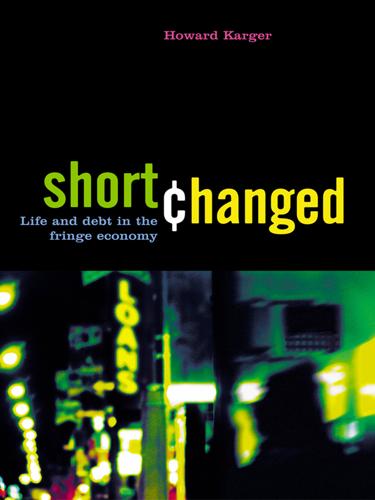
Shortchanged: Life and Debt in the Fringe Economy
by
Howard Karger
Published 9 Sep 2005
In fact, the BHPH sector is beginning to stratify, with middle- and higher-end lots selling vehicles costing $10,000 or more. Some are even selling newer cars and trucks for $20,000 and up. According to Michael Linn, CEO of the National Independent Automobile Dealers Association (NIADA), “We’re no longer just talking blue-collar working people.… We’re talking doctors, lawyers. It’s a growing industry because of what is going on economically, and the influx of immigrants. The common denominator is no credit or damaged credit.”23 Like much of the fringe economy, the BHPH industry is driven by the profitability of financing rather than the profitability in selling a product.

The Autonomous Revolution: Reclaiming the Future We’ve Sold to Machines
by
William Davidow
and
Michael Malone
Published 18 Feb 2020
Creating the construction boom of the future would undoubtedly involve government subsidies and programs similar to Eisenhower’s Federal-Aid Highway Act of 1956.49 It would also involve tax incentives to encourage entrepreneurs to build the right kinds of infrastructure. These arguments about construction obviously go against the notion that white-collar work bolstered by a college education will be the best defense against the depredations of job loss due to robots and artificial intelligence. In fact, building and trades, traditional blue-collar work, could well turn out to be the Last Stand of the Good Job. Another opportunity lies in entrepreneurship. New companies are the major source of new jobs in the U.S. economy. Unfortunately, new business formation has dropped to a forty-year low that is about 25 percent behind its best year.50 Our lawmakers hardly seem to have noticed that fact—after all, small start-ups are too busy to do much lobbying on their own account, even if they could afford to.

Listen, Liberal: Or, What Ever Happened to the Party of the People?
by
Thomas Frank
Published 15 Mar 2016
It’s about the horror of blue-collar life, about how dehumanizing it is to do the kind of work that no one who passes by here ever does anymore: I think of the men I’ve known in factories with no way to get out— choking while living choking while laughing When I think of the men I’ve known in factories, I think of those locked-out workers I met in Decatur, Illinois, in the early days of the Clinton administration. What concerned them was not so much the existential frustration of blue-collar work as it was the fraying of the middle-class promise. Although they were “out,” they weren’t particularly interested in staying out; they would have been happy to go back in provided their jobs were safe and paid well. They wanted to live what we used to think of as ordinary lives. In a scholarly paper about social class published in 1946, the sociologist C.
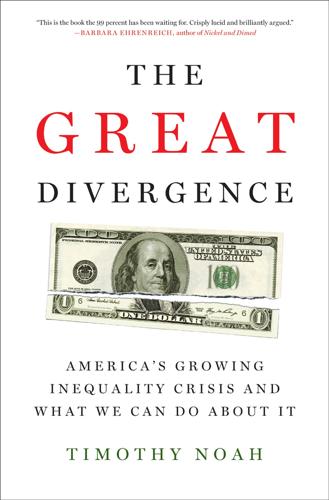
The Great Divergence: America's Growing Inequality Crisis and What We Can Do About It
by
Timothy Noah
Published 23 Apr 2012
The elimination of rule-based jobs tends to fall heavily on middle incomes—including, conceivably, truck drivers. Higher-income jobs seldom involve, in Manjoo’s formulation, doing “a single thing.” In 1969 the two broad categories encompassing the occupations of the largest proportion of American workers were blue-collar work and administrative support. Together, Levy and Murnane calculate, these categories described 56 percent of the workforce. By 1999, they described only 39 percent. The decline occurred because many of these jobs were sufficiently rule-based that industrial robots and desktop computers could do them.
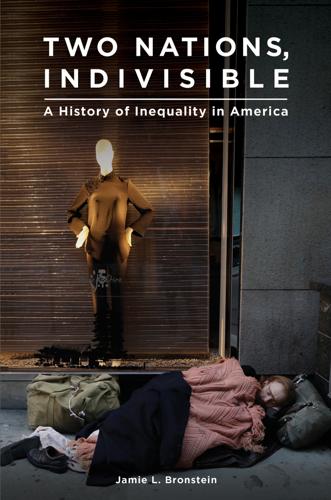
Two Nations, Indivisible: A History of Inequality in America: A History of Inequality in America
by
Jamie Bronstein
Published 29 Oct 2016
The Depression and wartime periods forged widespread agreement among all parties that the best way to end poverty was through economic growth, consumerism, and regulation of the economy to guarantee fundamental fairness.96 Postwar prosperity enabled political leaders to focus on those still living in pockets of poverty, a trend examined in the next chapter. CHAPTER 6 The Great Compression and the War on Poverty: 1945–1979 The years between 1945 and the late 1960s saw unprecedented compression between the wealthy and the poor. It was fueled by high taxes on upper incomes, healthy American industries with high wages for blue-collar work, demographic growth, and an expanding managerial sector. The union movement flourished, and 35 percent of the workforce was unionized in 1954—the highest percentage in American history.1 The GI bill greatly expanded access to a college education. Returns from a college education actually slightly decreased, helping to compress inequality further.2 Between 1945 and 1973, the economy grew at the impressive rate of 3.42 percent.
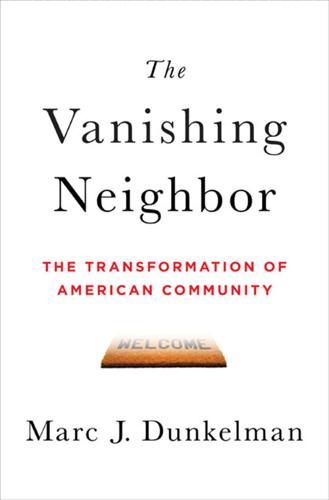
The Vanishing Neighbor: The Transformation of American Community
by
Marc J. Dunkelman
Published 3 Aug 2014
One need only read the New York Times’s 2013 profile of a homeless girl living in the Big Apple to realize that many have been left out.11 The discretionary income of many middle- and lower-income families, measured in real terms, has declined.12 The three decades preceding the Great Recession of 2007 saw wages stagnate for full-time male workers, particularly those doing blue-collar work.13 And retirement security remains a real worry for many Americans, even as few have embraced strategies that would help to finance the elderly lifestyle they dream of enjoying. Nevertheless, in the aggregate it’s almost impossible to deny that the goods that define the average American’s material life have improved.

The Weightless World: Strategies for Managing the Digital Economy
by
Diane Coyle
Published 29 Oct 1998
For men with only a basic education, however, the unemployment rates in 1970, 1979 and 1989 climbed from 4.0 to 6.6 to 9.7 per cent, and for women from 5.7 to 8.3 to 8.4 per cent. According to the OECD’s figures, only in Italy and for Japanese women was unemployment higher for the better-educated at any time. Typically, those likely to be in blue collar work are two or three times more at risk of unemployment than those likely to be white collar workers. Beyond that, the one striking feature about redundancies is the upsurge during the 1980s recession. It has fallen sharply since. That episode of industrial restructuring has dwarfed any other. One could therefore argue that during the past decade this unwelcome aspect of flexibility has diminished.
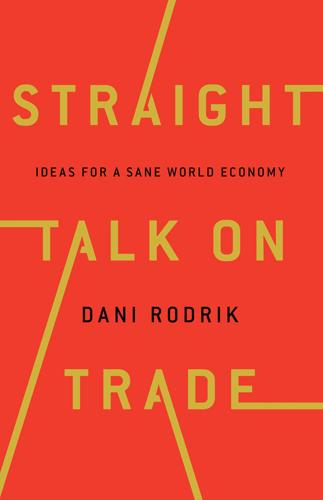
Straight Talk on Trade: Ideas for a Sane World Economy
by
Dani Rodrik
Published 8 Oct 2017
Conditions in the workplace improved as state-mandated or negotiated arrangements led to reduced working hours; greater safety; and vacation, family, health, and other benefits. Public investment in education and training made workers both more productive and freer to exercise choice. Labor’s share of the enterprise surplus rose. Factory jobs never became pleasant. But at least blue-collar work now enabled a middle-class existence, with all its consumption possibilities and lifestyle opportunities. Technological progress fostered industrial capitalism, but would eventually undermine it. Labor productivity in manufacturing industries rose much faster than in the rest of the economy.
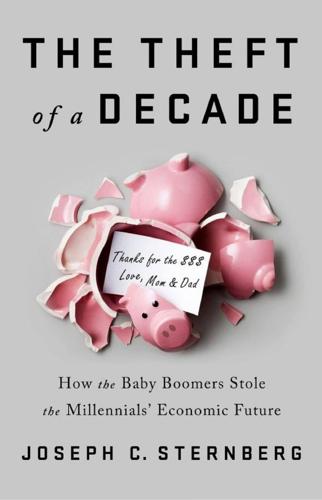
The Theft of a Decade: How the Baby Boomers Stole the Millennials' Economic Future
by
Joseph C. Sternberg
Published 13 May 2019
Economists have studied this by dividing jobs between “routine” roles that mainly involve performing functions that are relatively mechanical or that require following specific rules (such as working on an assembly line, data entry, or some aspects of bookkeeping); nonroutine manual jobs such as truck driving or customer service in a retail shop; and nonroutine “cognitive” jobs such as marketing.14 Traditionally, routine jobs encompassed a wide range of clerical and blue-collar work that required some training or education but not a prohibitive amount—and jobs in which young workers especially might acquire skills that would allow them to move up the ladder over time. Those jobs have borne the brunt of recent recessions. By one estimate, nearly 12 percent of routine jobs disappeared during the Great Recession.

Forward: Notes on the Future of Our Democracy
by
Andrew Yang
Published 15 Nov 2021
It was billed as a gathering of potential presidential candidates, though I was the only candidate who had actually declared: the speakers were Tulsi Gabbard, the Oregon senator Jeff Merkley, Governor Jay Inslee of Washington, and me. I spoke directly after Jeff Merkley. His speech had a series of applause lines invoking health care, drug companies, Betsy DeVos, Brett Kavanaugh, separating children from families at the border, internment camps, climate change, voter suppression, corruption, Democratic majorities, and blue-collar working families, among other topics. My introduction was not great: the county supervisor said to the crowd, “Keep an open mind; there may be twenty-five candidates running; it’s our job to start weeding them out. This man has some very interesting ideas.” Not exactly a ringing endorsement. I delivered my usual remarks about automation, a transforming economy, and universal basic income.

Artificial Whiteness
by
Yarden Katz
In 1978 the New York Times ran an interview with Simon that gave a glimpse into his politics: “Is the system actually in peril and is a revolution dawning? Mr. Simon says that he sees no signs of it. But he adds, before the French Revolution, nobody anticipated it. ‘I don’t see brittleness in the system,’ he says. ‘The [labor] unions are no threat. They throw some sand in the machinery, but there has been a decline in blue-collar work and their power is waning. I see no shift in the balance of forces within government.’ … Mr. Simon dislikes excessive government intervention in companies and universities and the growing litigiousness of society.” 36. Nilsson draws heavily here on the work of another winner of the Swedish National Bank’s Prize in Economics, Wassily Leontief.
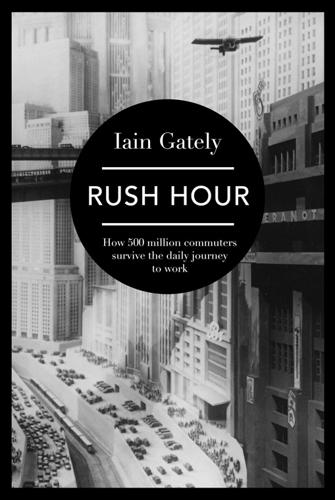
Rush Hour: How 500 Million Commuters Survive the Daily Journey to Work
by
Iain Gately
Published 6 Nov 2014
On the second occasion, he needed three months’ sick leave and counselling before he could work again. The stress is as bad on a day-to-day basis among bus drivers. According to Professor M. A. J. Kompier, a Dutch psychologist, driving a bus is ‘a high-risk occupation’, cruel to both body and psyche, in comparison to office work, blue-collar work, taxi driving or working at a brewery or as a civil servant – or indeed almost every other occupation. Sitting down all day and driving a large vehicle slowly is more dangerous than it seems. The ergonomics of many drivers’ cabs are poor – the steering wheels are too big, the seats are one-size-fits-all and the pedals are either not close enough or almost out of reach, with the result that most drivers have to twist, stretch or hunch up while they’re being shaken by the motion of the bus, blasted with hot or cold air whenever they open the doors, and abused by their passengers.

The Human City: Urbanism for the Rest of Us
by
Joel Kotkin
Published 11 Apr 2016
“No amount of analysis and forward planning,” says longtime government adviser Peter Ho, “will eliminate volatility and uncertainty in a complex world.” The economics-driven managerial model, he concedes, so successful in the past, is not so effective in dealing with issues of identity and growing pressure on the middle class, particularly with the reduction in high-wage, blue-collar work. To thrive in the future, Singapore, like other great global cities, will have to find its way without a pre-drawn map. As Asia modernizes and develops a modern infrastructure, Singaporeans cannot remain competitive merely by being more efficient or better educated. The city-state will have to rediscover the boldness of its founding generation, even while discarding many of its methods.

A World Without Work: Technology, Automation, and How We Should Respond
by
Daniel Susskind
Published 14 Jan 2020
President Barack Obama, in his 2016 farewell address, described automation as “the next wave of economic dislocation.” But so did President John F. Kennedy, about sixty years earlier, when, using almost identical words, he said that automation carried with it “the dark menace of industrial dislocation.”17 Similarly, in 2016 Stephen Hawking described how automation has “decimated” blue-collar work and predicted that this would soon “extend … deep into the middle classes.”18 Yet Albert Einstein had made a similar threat in 1931, warning that “man-made machines,” which were meant to liberate human beings from drudgery and toil, were instead poised to “overwhelm” their creators.19 In fact, in almost every decade since 1920, it is possible to find a piece in the New York Times engaging in some way with the threat of technological unemployment.20 UPHEAVAL AND CHANGE Most of these anxieties about the economic harm caused by new technology have turned out to be misplaced.

Stakeholder Capitalism: A Global Economy That Works for Progress, People and Planet
by
Klaus Schwab
Published 7 Jan 2021
Early on, I became very intrigued by the complementary roles business and government played in shaping the future of a country. For this reason, it was natural to write one of my theses about the right balance between private and public investments. Having worked during more than a year on the shop floor of companies, experiencing real blue-collar work, I also developed a special respect for the contribution of workers in developing economic wealth. My belief was that business, like other stakeholders in society, had a role to play in creating and sustaining shared prosperity. The best way to do so, I came to think, was for companies to adopt a stakeholder model, in which they served society in addition to their shareholders.

Pure Invention: How Japan's Pop Culture Conquered the World
by
Matt Alt
Published 14 Apr 2020
” While it is true Japan has a checkered history with refugees, political leaders are belatedly recognizing the need to admit migrant workers to pick up the slack from its super-aging population. In 2017 and 2018, the politically conservative Abe administration passed laws fast-tracking permanent residency for skilled immigrants and greatly expanding the number of blue-collar work visas that would be granted. In Tokyo alone, more than one in eight young people coming of age as adults in 2018 were not of Japanese descent. The double irony of it all was that Caucasian men of the sort who inevitably espoused these beliefs were by no means the only fans of manga and anime in the United States.

Stakeholder Capitalism: A Global Economy That Works for Progress, People and Planet
by
Klaus Schwab
and
Peter Vanham
Published 27 Jan 2021
Early on, I became very intrigued by the complementary roles business and government played in shaping the future of a country. For this reason, it was natural to write one of my theses about the right balance between private and public investments. Having worked during more than a year on the shop floor of companies, experiencing real blue-collar work, I also developed a special respect for the contribution of workers in developing economic wealth. My belief was that business, like other stakeholders in society, had a role to play in creating and sustaining shared prosperity. The best way to do so, I came to think, was for companies to adopt a stakeholder model, in which they served society in addition to their shareholders.

Radicals Chasing Utopia: Inside the Rogue Movements Trying to Change the World
by
Jamie Bartlett
Published 12 Jun 2017
As I discuss in Chapter 5, with the story of Beppe Grillo, this is in part a rebellion against a professional political class that speaks its own PR-honed language. But it also reflects a fundamental rift within many left-wing parties that now seek to represent both a socially and economically liberal graduate class and a less liberal blue-collar working class. The two groups’ interests don’t always align, and most political leaders—well-educated liberals themselves—are more at ease with the language, politics, lobbying groups and ideas of the progressive wing. As a result, billionaire right-wing politicians with economic policies that won’t help them, like Donald Trump, can attract millions of working-class voters who feel forgotten with the right language and identity-based promises.
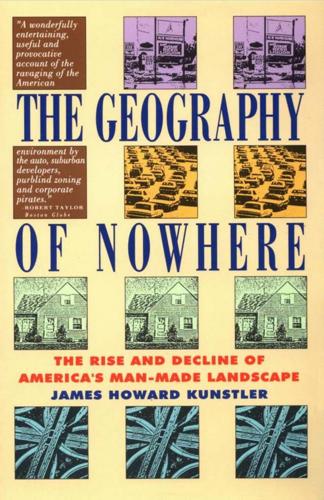
The Geography of Nowhere: The Rise and Decline of America's Man-Made Landscape
by
James Howard Kunstler
Published 31 May 1993
There were only so many office managers, regional sales direc tors, and other business executives to buy those new "colonial" houses out in Lazy Acres. The bulk of American workers toiled in the very factories that were overproducing cars and electric waffle irons, and even before they were laid off in the Depression, few blue-collar work ers could have afforded a new house in the suburbs and a car to drive there. They were the very ones who remained behind in the cities until after World War II. The huge public expenditure in paving streets and building new high ways had also reached a kind of natural limit in the late twenties; the basic infrastructure for cars was now in place.

The Age of Entitlement: America Since the Sixties
by
Christopher Caldwell
Published 21 Jan 2020
She complained that, “to top it all off, the problem of servants or child care often proves insurmountable after others are solved”—and this at a time well before mass immigration had reintroduced household servants into American upper-middle-class life. In the eyes of almost all men, women’s liberation was not just by but for such women as Steinem. It aimed at improving the position of women in white-collar work. The question of whether blue-collar work—plowing, lifting, grinding, getting dirty—was appropriate to women came up much less often than one might have anticipated. Partly feminists were blinded to it by their own social background, but in hindsight we can see another explanation: The supply of well-paying blue-collar jobs had begun to shrink rapidly.
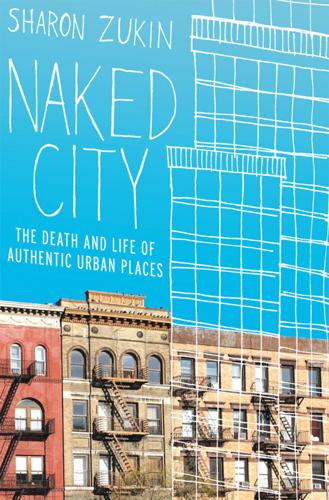
Naked City: The Death and Life of Authentic Urban Places
by
Sharon Zukin
Published 1 Dec 2009
Today the use of “gritty” in the media depicts a desirable synergy between underground cultures and the creative energy they bring to both cultural consumption and real estate development, not as an alternative to but as a driver of the city’s growth. When the New York Times recommends “the gritty charm of Friday Night Fights” in the basement of a church, where the audience includes “thugs from the ghetto … blue-collar working class types … rich dudes and hipsters,” readers know this is a positive recommendation. So is the comment of ninety-one-year-old Arthur Laurents, who wrote the book of the original musical West Side Story and directed its revival on Broadway in 2009; the new version of the play, said Laurents, should “achieve an authentic grittiness that the theater of the 1950s didn’t allow.”

The Big Roads: The Untold Story of the Engineers, Visionaries, and Trailblazers Who Created the American Superhighways
by
Earl Swift
Published 8 Jun 2011
The effects on those not using the roads were neither as easily tallied nor as eagerly sought. And they rested on a fundamental assumption that would soon prove flawed: that in the years to come, white-collar jobs would remain clustered in downtown office buildings, along with most retail shopping and nighttime entertainment, and blue-collar work would stay concentrated in well-established industrial zones. Most urban traffic, then, would continue to move back and forth between these few defined destinations and a city's residential neighborhoods. The Chief failed to grasp that his roads would change the old patterns, that in addition to addressing traffic that already existed, they would spawn new centers for business and entertainment, and farther-flung subdivisions—that they would explode the traditional city built around a nucleus, something resembling a cell, into a blob sprinkled with smaller nodes of activity.
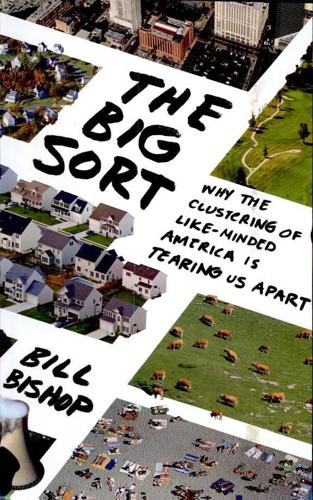
The Big Sort: Why the Clustering of Like-Minded America Is Tearing Us Apart
by
Bill Bishop
and
Robert G. Cushing
Published 6 May 2008
The top five cities in percentage of creative-class workers were Washington, Raleigh-Durham, Seattle, San Francisco, and Austin. Las Vegas had the lowest percentage of creatives, followed by Miami, Memphis, and Louisville. Florida found that the cities teeming with creative-class workers had fewer working-class jobs—the assembly-line, mechanical, construction, and production jobs traditionally called blue-collar work. The cities with the most service jobs (Las Vegas being at the top) also lacked creative-class workers. There simply wasn't much overlap. Few cities had both a sizable working class and a large creative class. The same kind of segregation was happening at work. Older firms—General Motors and U.S.

When Computers Can Think: The Artificial Intelligence Singularity
by
Anthony Berglas
,
William Black
,
Samantha Thalind
,
Max Scratchmann
and
Michelle Estes
Published 28 Feb 2015
That makes it difficult to really understand the higher level descriptions unless the reader already has some understanding of the technology, but such a grounded understanding is probably unnecessary for management purposes. CGP Grey 2014 Humans Need not apply. http://www.cgpgrey.com/ Fair Use. A short, sharp video on the short-term effects of automation. Discusses the end of a large proportion of blue collar work, although the claims about automating white collar jobs in the short term are less well founded in my opinion. Berglas 2014 When Computers Can Think Owned The present book differs from the preceding ones by providing a strong focus on why people ultimately are the way they are, namely upon natural selection.
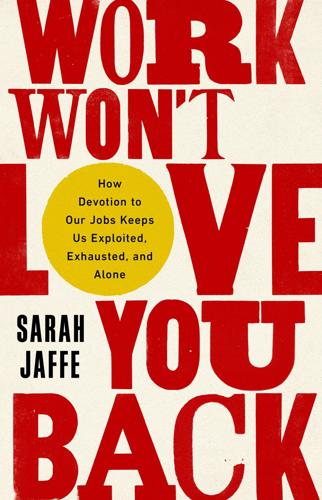
Work Won't Love You Back: How Devotion to Our Jobs Keeps Us Exploited, Exhausted, and Alone
by
Sarah Jaffe
Published 26 Jan 2021
Those who can, therefore, jump ship from academia into “direct service to capital,” becoming analysts for finance or working exclusively for the wealthy. Those who can’t wind up as adjuncts, in the service industry, or sometimes both. In a 2019 interview, Barbara Ehrenreich explained, “I would say that what happened to the blue-collar working class with deindustrialization is now happening with the PMC—except for the top managerial end of it.” In other words, instead of a professional-managerial class, you have management—and everyone else. 38 Years after her fight with Ronald Reagan for her academic post, Angela Davis suggested, as the Ehrenreichs did, that academics had to answer for their own elitism.

The Job: The Future of Work in the Modern Era
by
Ellen Ruppel Shell
Published 22 Oct 2018
* * * — In his landmark 1977 study Learning to Labor: How Working Class Kids Get Working Class Jobs, British sociologist Paul Willis relates the true story of a group of teenage boys growing up in a place he called “Hammertown,” a hardscrabble factory town where workers far outnumbered opportunities. He wrote that the “lads” rebelled against school authorities, believing that their future lay not in books or office jobs but in the blue-collar work of their fathers. These “lads” were scornful of what Willis called the “work hard, move forward” educational system they believed would bring them at best a humiliating low-wage desk job. These students did poorly in school, and most of them dropped out. They failed not because they were lazy or dimwitted but because the standards of educational success of the time were proscribed by a system geared to satisfy the demands of employers rather than to build on individual capabilities, values, and strengths.

The Push: A Climber's Search for the Path
by
Tommy Caldwell
Published 15 May 2017
But before moving on we must free the pitch bottom to top, with no weighting of the rope or gear. Only when we’ve freed through pitch 28 will we haul a portaledge and lightweight supplies to make another camp for a night, and then blast the remaining four pitches to the top. As we walk I talk in pleasantries, a little uneasy with the fact that others are doing my blue-collar work. I always thought it arrogant to have someone else do the heavy lifting for you. If you don’t own your grunt work, can you really say you’ve done the climb? Kevin doesn’t seem to worry much about such things. “What would the Tour de France look like if the riders had to carry all their equipment with them?”

Why Things Bite Back: Technology and the Revenge of Unintended Consequences
by
Edward Tenner
Published 1 Sep 1997
Evidence from the back injuries of forklift truck operators suggests that a 26 • 27 28 high rate of injury among young workers may conceal the true scope of the problem by natural selection: workers with excessive pain may simply switch jobs without filing workers' compensation claims. Similarly, some mature blue-collar workers may be CTD-resistant survivors.29 Even with the survivor effect, cumulative trauma disorders are still undoubtedly more serious in blue-collar work. They have become alarmingly common. In 1993, over 300,00o new cases were reported, a more than tenfold increase since 1982. They now constitute more than 6o percent of all workplace injuries, but they are not evenly distributed across industries. The U.S. Bureau of Labor Statistics reports that in 1992 there were nearly 1,400 CTD cases per mow workers in meat packing and 86o in auto manufacturing, but only forty-four in newspaper publishing.

The Awoken: A Novel
by
Katelyn Monroe Howes
Published 8 Aug 2022
Even I was unknowingly aware of an early offshoot of their movement in my first lifetime; the man who threw the smoke bomb at me was an avid follower. In the years and decades after I died, the UA party won more and more elections until by 2050 they held the Senate majority. They weren’t far right or far left specifically. They offered an answer to lower- and middle-class fears of tech automation taking over blue-collar work and built a strong luddite platform. Promising a fairer distribution of wealth and a healthy middle class, they united people under wholesome family values and moral superiority with an emphasis on rural and agricultural importance in a technology-obsessed world. It was a party for everyone that took a little from Republicans and a little from Democrats and fundamentally disrupted the political conversation.
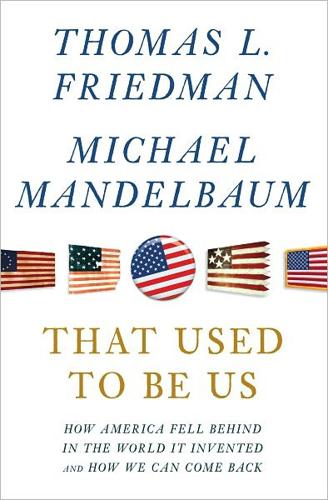
That Used to Be Us
by
Thomas L. Friedman
and
Michael Mandelbaum
Published 1 Sep 2011
We pay health care, pensions, all the holidays, and $18 to $22 an hour. I think it is going to be a major issue for this country in the next few years. Our biggest problem is finding factory workers who are going to replace this group of men and women in their fifties who started with us.” That is especially a problem, he explained, because blue-collar work is not what it used to be. On the shop floor, as is the case everywhere else, average is over. “We look for a guy who can think for himself a little bit, not like before,” said Stevenson. “We sell an $80,000 to $150,000 computer-controlled cutter, and it has a software program that helps the customer design parts.
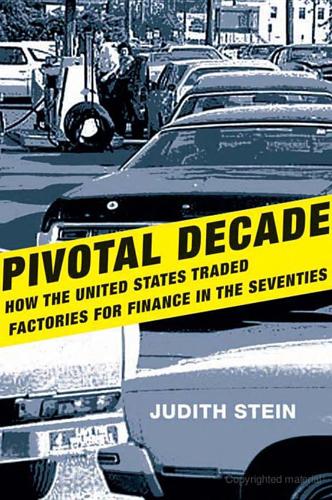
Pivotal Decade: How the United States Traded Factories for Finance in the Seventies
by
Judith Stein
Published 30 Apr 2010
It was another instance of the Democratic attempt to attract white southern voters with symbols, not policies. Many whites had left the Democratic Party in the South, but those who remained had characteristics similar to Democratic whites in the rest of the nation: older, Catholic, union member, blue collar, working class, less educated, and less affluent.49 During the 1970s, southern Democrats learned to represent biracial constituencies. The addition of black voters and the departure of more affluent whites made white Democrats more liberal than their predecessors on economic matters. Carter was weakest and Reagan the strongest in the white suburbs and other affluent communities.50 The South was still in play during the 1970s.
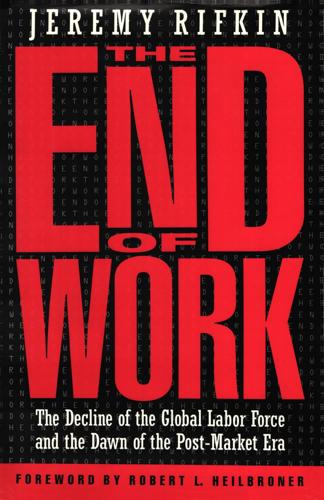
The End of Work
by
Jeremy Rifkin
Published 28 Dec 1994
Between 1981 and 1991, more than 1.8 million manufacturing jobs disappeared in the US.15 In Germany, manufacturers have been shedding workers even faster, eliminating more than 500,000 jobs in a single twelve-month period between early 1992 and 1993. 16 The decline in manufacturing jobs is part of a long-term trend that has seen the increasing replacement of human beings by machines at the workplace. In the 1950s, 33 percent of all US. workers were employed in manufacturing. By the 1960s, the number of manufacturing jobs had dropped to 30 percent, and by the 1980s to 20 percent. Today, less than 17 percent of the workforce is engaged in blue collar work. Management consultant Peter Drucker estimates that employment in manufacturing is going to continue dropping to less than 12 percent of the US. workforce in the next decade. 17 For most of the 1980s it was fashionable to blame the loss of manufacturing jobs in the United States on foreign competition and cheap labor markets abroad.
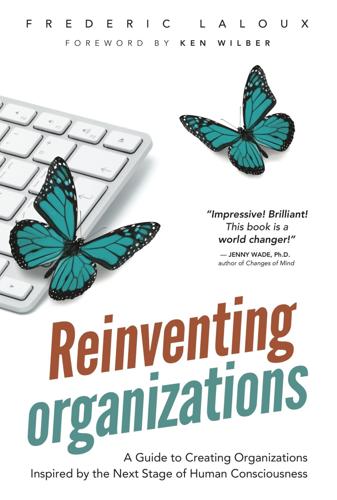
Reinventing Organizations: A Guide to Creating Organizations Inspired by the Next Stage of Human Consciousness
by
Frederic Laloux
and
Ken Wilber
Published 9 Feb 2014
FAVI was created in the late 1950s and started off creating brass pieces for faucets. Today most of its revenue comes from the gearbox forks it produces for the automotive industry; its other products include components for electrical motors, water meters, and hospital equipment. Work at FAVI is physically demanding; it’s real blue-collar work. The factory is not a squeaky clean automotive assembly where you can see robots perform elegant and silent dances. It’s a workshop where operators work hard loading and unloading metal pieces onto noisy workstations. The nature of batch production at FAVI allows for only limited automation.
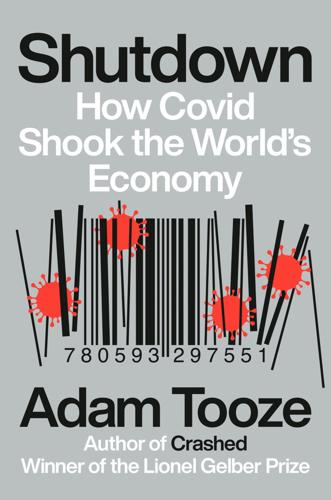
Shutdown: How COVID Shook the World's Economy
by
Adam Tooze
Published 15 Nov 2021
It anchored the sense that the president was being victimized by a combination of hostile forces: a virus imported from China, the relentless hounding by “fake news,” Wall Street liberals, the socialism of Bernie Sanders and “the squad,” woke antiracism, liberal governors harassing Trump’s loyal following in the small-business community, and a tyranny of public health experts who demanded the wearing of Asian-style face masks. The opposite of all that was national, virile, and healthy, and if one followed the logic of Barr’s remarks, it was blue-collar working-class Americans betrayed by cosmopolitan corporate elites. This in turn meant, in a dizzying inversion of the familiar fronts, that the Republican Party now stood for the working class. It was a theme that Trump had repeatedly struck since the election campaign of 2016. He liked nothing better than to be photographed alongside burly working-class Americans, ideally in work clothes and hard hats.

AI 2041: Ten Visions for Our Future
by
Kai-Fu Lee
and
Qiufan Chen
Published 13 Sep 2021
Such algorithms will displace routine white-collar work easily, just as software has steadily taken over routine white-collar tasks, such as bookkeeping and data entry. In “The Job Savior,” we saw examples of affected white-collar workers ranging from bookkeepers to insurance underwriters. When combined with robotics, AI will also displace increasingly complex types of blue-collar work. As we saw in the story, by 2041, warehouse pickers—who perform routine tasks—will have long been displaced; many construction workers will have been displaced, as building practices shift toward prefabricated components built by robots that are easy to assemble en masse; and even plumbers will slowly be phased out, as human plumbers will only be needed primarily to service older buildings with complicated, retrofitted systems that require unique repairs.
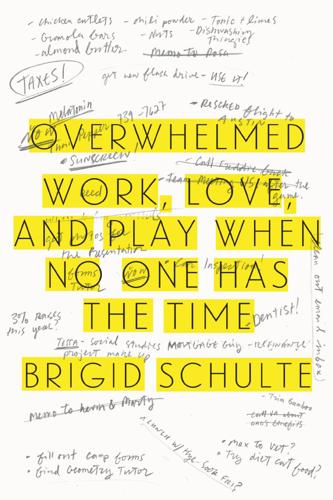
Overwhelmed: Work, Love, and Play When No One Has the Time
by
Brigid Schulte
Published 11 Mar 2014
abortion academia Accenture addiction ADHD; adult diagnosis adrenaline Adventures of Ozzie and Harriet, The (TV show) advertising Africa African Americans; mothers after-school care age; brain and; of parenthood agriculture Aka pygmies Akil, Huda Albrechtsen, Sharmi alcohol Allen, David alloparents allostasis Almeida, David Alzheimer’s disease ambivalence; intensive mothering and American Academy of Pediatrics American Psychological Association American Time Use Survey amygdala Anciano, Dionne Android animal play Ann Arbor, Michigan Ansell, Emily anxiety; effect of stress on brain Apple appliances Archimedes aristocracy Aristotle Arrowood, Bryce Astrata Group Atlanta Atlantic, The attachment theory Augustine, Saint Australia Austria autism autoimmune deficiency diseases Ayanna, Ariel Babik, Lisamarie babysitters Bakst, Dina Banaji, Mahzarin Bandura, Albert basal ganglia Baysinger, Sara BDO Financial Services Beauvoir, Simone de Beblo, Miriam Beck, Melinda Becker, Gary: A Treatise on the Family Beeman, Mark Beeson, Tracy Belgium Benard, Stephen Berns, Gregory Best Buy Better Balance, A Bianchi, Suzanne bias, unconscious bills, paying Birmingham, Betsy birth control birthday parties birth defects birthrates, declining BlackBerry Blades, Joan blood pressure Bloomberg, Michael Bloomberg LP blue-collar work; flexibility Bonke, Jens Bono boredom Boston Boston College Bowdoin College Bowlby, John Brach, Tara brain; attachment and; blink; development; effect of stress on; gender differences; information overload and; mindfulness and; play and; pulsing; shrinkage; sleep and; urge to conform and Brannen, Barbara Bravo, Ellen Brazil breadwinner-homemaker stereotype breakups, romantic breast-feeding Bregman, Peter British Medical Journal Brown, Stuart Brown Palace Hotel, Denver Buchanan, Pat Buddhism Budig, Michelle Bulgaria Bureau of Labor Statistics Burnett, Ann Bush, George H.

The Impossible Climb: Alex Honnold, El Capitan, and the Climbing Life
by
Mark Synnott
Published 5 Mar 2019
Now drop back onto the right foot, making sure the bungee is pulling hard on the weight belt—again, chafing is important. Repeat this process ALL DAY LONG. . . . Now imagine you’re doing this for fun. Actually, this is what you’ve been dreaming about all year. And the good times aren’t reserved just for today. You’re going to be sitting behind K-Mart ALL SUMMER. . . . This is serious blue-collar work, for which there is little tangible reward. You could jug loads all day and there would still be plenty of stuff waiting to be brought up. Such is the nature of a heavy-handed big wall climb. You would have to be numb in the head to actually enjoy this stuff. * * * — AND HERE’S ALEX’S take on the same subject.

Norco '80: The True Story of the Most Spectacular Bank Robbery in American History
by
Peter Houlahan
Published 10 Jun 2019
This was one place they did not need to worry about for the next few hours, not with all these Jesus freaks running around. George paused, his dark eyes fixed coldly on them. George had a deep distrust of police even though he had never been in trouble with the law. It was something he got from his father. There was another reason Walter Smith had wanted to put Wyoming behind him. After three years of blue-collar work, Walter had finally landed a job as an officer with the Casper Police Department. The only thing Walter ever wanted to be was a cop, and he hoped the job with the Casper PD would be the first step in a lifelong career in law enforcement. What he found instead was a culture of corruption and criminal activity on the part of his fellow officers.
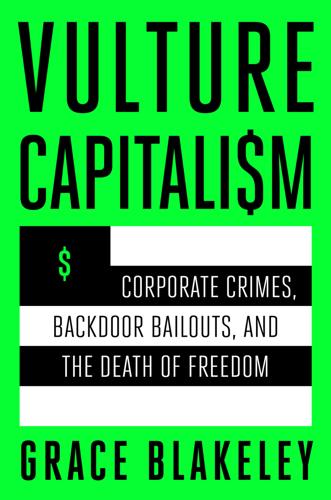
Vulture Capitalism: Corporate Crimes, Backdoor Bailouts, and the Death of Freedom
by
Grace Blakeley
Published 11 Mar 2024
Braverman was born, like Baran, to working-class Jewish parents and was raised, like Sweezy, in New York. He studied at Brooklyn College for one year before being forced to drop out for financial reasons, and it was during that year that he became acquainted with Marxism.135 Unlike either Baran or Sweezy, Braverman had direct experience of blue-collar work under monopoly capitalism. He spent four years working as a coppersmith apprentice at the Brooklyn Navy Yard, before joining the army and then working as a steelworker in Ohio. He was an active member of various socialist groups during this time and was eventually fired from one of his jobs “at the instigation of the FBI.”136 Over the course of the 1950s, Braverman began working on what would eventually become Labor and Monopoly Capital, his seminal study of work under monopoly capitalism.

The Chairman's Lounge: The inside story of how Qantas sold us out
by
Joe Aston
Published 27 Oct 2024
It gave us confidence that we could give their witnesses a really tough time on the stand.’ The Oldmeadow advice, received by Qantas on 11 June 2020, emphasised: Should a decision be made to outsource all of the below wing operation, this would represent the largest compulsory redundancy program of a single blue collar work group and the largest outsourcing program ever undertaken by Qantas… The TWU has nothing to lose in taking [Qantas] on over outsourcing and in the current environment may well win significant public sympathy. Ultimately if the legal and commercial reasons support outsourcing all the below wing in [Qantas], then it will succeed.

Physics of the Future: How Science Will Shape Human Destiny and Our Daily Lives by the Year 2100
by
Michio Kaku
Published 15 Mar 2011
We forget that computers are just sophisticated adding machines, and repetitive work is what they do best. That is why some automobile assembly-line workers have been among the first to suffer from the computer revolution. This means that any factory work that can be reduced to a set of scripted, repetitive motions will eventually disappear. Surprisingly, there is a large class of blue-collar work that will survive the computer revolution and even flourish. The winners will be those who perform nonrepetitive work that requires pattern recognition. Garbage collectors, police officers, construction workers, gardeners, and plumbers will all have jobs in the future. Garbage collectors, in order to pick up the trash at different homes and apartments, have to recognize the garbage bags, place them in the truck, and haul them out to the waste yard.

India's Long Road
by
Vijay Joshi
Published 21 Feb 2017
But that number pales into insignificance compared with the forthcoming additions to the labour force, which run into tens of millions, over the same period.14 In any case, the sector mostly employs skilled labour. It is not the answer to the employment needs of millions of low-skilled people with only primary and secondary education. They require industrial blue-collar work, with most training received on the job. The second manifestation of the bias against labour is the highly peculiar employment- size- distribution of India’s business enterprises. The economy has an inordinate number of tiny firms with very low productivity. The following data refer to 2005.15 In manufacturing there were around 50 million workers.

Coders: The Making of a New Tribe and the Remaking of the World
by
Clive Thompson
Published 26 Mar 2019
It’s become more of a ticket to the middle class; something that the great mass of people can see as a route to reasonably stable, enjoyable employment. It’s like, in other words, pretty much what mining used to be around Kentucky. “These are blue-collar workers,” Justice says of his programmers. “And this is blue-collar work.” Justice is right. The entire world of programming is now growing so quickly that it’s changing the nature of who becomes a coder, and why. We’re likely to see the mainstreaming of coding—its rapid growth into a skill that many more educated adults, and possibly a majority of them, need to possess to some degree.

Evil Geniuses: The Unmaking of America: A Recent History
by
Kurt Andersen
Published 14 Sep 2020
* * * — Because I’m an American who graduated college and as an adult haven’t been paid to do physical labor, I’ve never thought of myself as a worker. It’s too bad, I think, because since the 1960s that linguistic distinction has reinforced the divide between people who do white-collar and blue-collar work. We’re nearly all workers, rather than people who live off investments. Looking back now, probably the single most significant cause and effect of the big 1980s change in our political economy was the disempowerment of workers vis-à-vis employers. A few years ago when I first read the book Postcapitalism by the British business journalist Paul Mason, I came across a paragraph that stopped me short because it seemed so hyperbolic and reductive.

The Rise and Fall of the Neoliberal Order: America and the World in the Free Market Era
by
Gary Gerstle
Published 14 Oct 2022
He rarely criticized them, even when he was brought under extreme pressure to do so, as he was in the aftermath of a white nationalist, neo-Nazi protest in Charlottesville, Virginia, in August 2017 that turned violent and then deadly.22 Trump’s ethnonationalism always had a class dimension to it. Trump imagined that he was standing up for the little (white) guy who lived in America’s heartland and whose life had been undercut by globalizing elites. In Trump’s eyes, these elites’ pursuit of free trade had stripped America of manufacturing jobs and undercut the wages for the blue-collar work that remained. Elite support for the movement of migrants across national borders, Trump believed, had brought many more people of color to America, rendering the nation less and less recognizable in the process. A diverse America, in the eyes of Trump and his supporters, signalled the nation’s decline.

Trust: The Social Virtue and the Creation of Prosperity
by
Francis Fukuyama
Published 1 Jan 1995
The former sold 30,000 copies by 1922, and the latter went through thirty successive printings in the following years, leading to minor cults of Taylorismus and Fordismus.1 The enormous advance in productivity represented by Ford’s Highland Park facility impressed on German manufacturers the need to adopt mass production techniques in their own operations, and lay behind the “rationalization” movement in German industry during the mid-1920s. But while German industry adopted mass production, Taylorismus never sat very well with German managers and industrial engineers, much less German workers. The deskilling of the workforce, its overspecialization, and the unsatisfying nature of blue-collar work in a Taylorite factory threatened the long-standing German belief in the importance of Arbeitsfreude, or “joy in work,” whose origins lay in Germany’s powerful premodern craft traditions. Industrial engineers who wrote on the subject of factory organization in this period, like Gustav Frenz, Paul Rieppel, Friedrich von Gottl-Ottlilienfeld, and Goetz Briefs, all tended to distinguish between Taylorism and what they regarded as the more human system that Ford actually implemented.2 That is, while Taylor and Ford are closely linked in historical memory as the codifier and implementer, respectively, of the low-trust mass production factory system, Ford’s early plants actually practiced a form of company paternalism that was never part of Taylor’s scientific management principles.

Riding Rockets: The Outrageous Tales of a Space Shuttle Astronaut
by
Mike Mullane
Published 24 Jan 2006
From start to finish, a task that might have taken me five minutes on Earth had consumed nearly thirty minutes in space (and covered about eight thousand miles). There are times in an astronaut’s life he or she would pay dearly to have a gravity vector. Using the toilet is one of those times. Our third and last communication satellite was successfully deployed on flight day three. Compared with the missions of the early space program this was blue-collar work, completely devoid of glory. We weren’t beating the Russians to anything. We weren’t planting an American flag in alien soil. On Earth, there was no Walter Cronkite removing his dorky glasses, wiping his forehead, and shaking his head in relief while telling a waiting, breathless world, “They’ve done it!

There Is Nothing for You Here: Finding Opportunity in the Twenty-First Century
by
Fiona Hill
Published 4 Oct 2021
My first answer—Bishop Auckland, in County Durham, in the North East of England—demarcated my geographic place in the United Kingdom. The second and third answers delineated my place in society and the parameters of the social networks and opportunities available to me. All three of my answers, including my hometown, put me definitively in the blue-collar, working class. The United Kingdom was, and still is in the twenty-first century, an acutely class-based society. My father’s career, or really his job—the people I grew up with in Bishop Auckland had jobs, not careers—as well as the kind of school I went to were supposed to chart the limits of what I might do with my life and how people would regard or judge me.
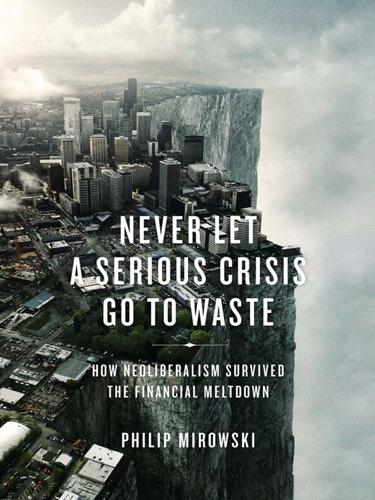
Never Let a Serious Crisis Go to Waste: How Neoliberalism Survived the Financial Meltdown
by
Philip Mirowski
Published 24 Jun 2013
There have been a fair number of writers who assert the contrary; one worth considering because he has been specifically concerned with political developments in the last three decades in the United States is Thomas Frank. In his breakthrough book What’s the Matter with Kansas? he posed the question in a rather American idiom: Why had the blue-collar working class abandoned the Democratic Party in favor of voting for snake-oil neoliberal salesmen who had demonstrated open contempt for their welfare? Or as he himself put it: All they have to show for their Republican loyalty are lower wages, more dangerous jobs, dirtier air, a new overlord class that comports itself like King Farouk—and of course, a crap culture whose moral free fall continues, without significant interference from the grandstanding Christers whom they send triumphantly back to Washington every couple of years.27 Frank’s answer to his own question was, crudely, a version of “bait and switch” that subsequently gained a fair level of acceptance among circles of the U.S. left, at least before the crisis.

Power and Progress: Our Thousand-Year Struggle Over Technology and Prosperity
by
Daron Acemoglu
and
Simon Johnson
Published 15 May 2023
The automotive industry is indicative of these trends. US car companies were some of the most dynamic employers in the country in the first eight decades of the twentieth century, and as we saw in Chapter 7, they were at the forefront of not just automation but also the introduction of new tasks and jobs for workers. Blue-collar work in the automotive industry was plentiful and well paid. Workers without college degrees and sometimes even without high school diplomas were hired and trained to operate new, sophisticated machinery, and they received quite attractive wages. The nature and availability of work in the automobile industry changed fundamentally in recent decades, however.
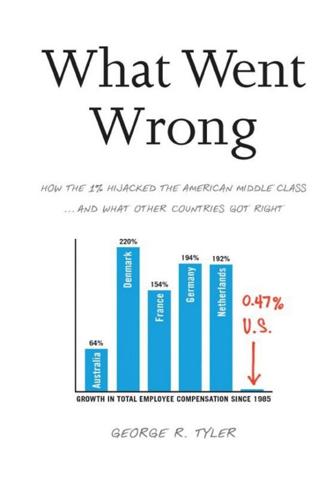
What Went Wrong: How the 1% Hijacked the American Middle Class . . . And What Other Countries Got Right
by
George R. Tyler
Published 15 Jul 2013
Blaming Globalization for the Sins of Reaganomics Here is conservative author Ross Douthat writing in February 2012, shifting responsibility for the outcome of Reaganomics onto globalization: “It was globalization, not Republicans, that killed the private-sector union and reduced the returns to blue-collar work.”26 Too many economists were taken in by this canard delivered with certitude by folks like a writer for the Economist in June 2006: “The integration of China’s low-skilled millions and the increased offshoring of services to India and other countries has expanded the global supply of workers.
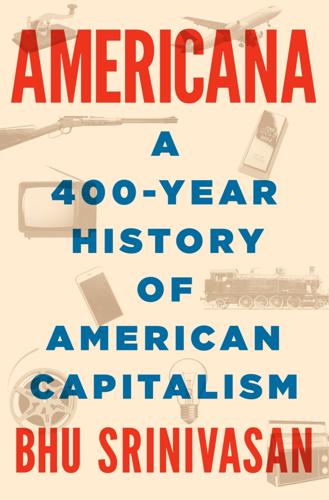
Americana: A 400-Year History of American Capitalism
by
Bhu Srinivasan
Published 25 Sep 2017
But even services were not safe. Customer-service representatives and certain types of programmers couldn’t take their jobs for granted either. Millions of college-educated, English-speaking Indians starting at less than $500 per month were willing to do for white-collar work what the Chinese had done for blue-collar work. There was little middle ground. The nativist saw jobs leaving due to free trade while the globalist saw the standard of living improving due to the same. America didn’t produce anything anymore, one common view held. But it did. It certainly built its own houses—the American enjoyed more square footage than anyone else in the free world.

Tools of Titans: The Tactics, Routines, and Habits of Billionaires, Icons, and World-Class Performers
by
Timothy Ferriss
Published 6 Dec 2016
In fact, this impatience in dealing with frustration is the primary reason that most people fail to achieve their goals. Unreasonable expectations timewise, resulting in unnecessary frustration, due to a perceived feeling of failure. Achieving the extraordinary is not a linear process. The secret is to show up, do the work, and go home. A blue collar work ethic married to indomitable will. It is literally that simple. Nothing interferes. Nothing can sway you from your purpose. Once the decision is made, simply refuse to budge. Refuse to compromise. And accept that quality long-term results require quality long-term focus. No emotion. No drama.

Americana
by
Bhu Srinivasan
But even services were not safe. Customer-service representatives and certain types of programmers couldn’t take their jobs for granted either. Millions of college-educated, English-speaking Indians starting at less than $500 per month were willing to do for white-collar work what the Chinese had done for blue-collar work. There was little middle ground. The nativist saw jobs leaving due to free trade while the globalist saw the standard of living improving due to the same. America didn’t produce anything anymore, one common view held. But it did. It certainly built its own houses—the American enjoyed more square footage than anyone else in the free world.

Wired for War: The Robotics Revolution and Conflict in the 21st Century
by
P. W. Singer
Published 1 Jan 2010
The telegraph was great for news junkies, but bad for the Pony Express riders. The same will be true with robotics. Numerous professions have already been displaced by very simple robotics, from automobile factory workers to maids, and this will continue as robotics gets more and more capable each year. As the trend plays out, robots won’t just be doing blue-collar work, but also service and even white-collar jobs. And for each job they eliminate, there will be one more person competing for the remaining jobs. It’s the robot version of outsourcing, just that your job is being shipped to a piece of faceless hardware, rather than some textile worker in Bangkok or engineer in Bangalore.
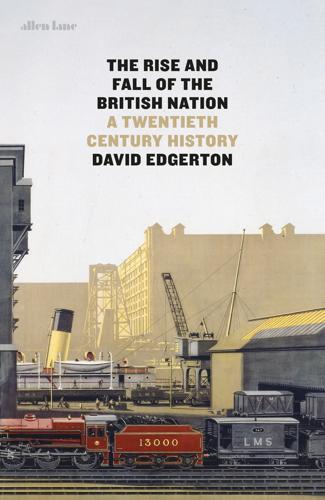
The Rise and Fall of the British Nation: A Twentieth-Century History
by
David Edgerton
Published 27 Jun 2018
Another very important reason was changes in the organization of work, partly in relation to scale of operation. There may have been an element of the deskilling of a large section of manual work, though by no means all. Even more than in the interwar years, the years of the long boom were those of the management expert, the white-collar organizers and measurers of blue-collar work. The idea that British business was slow in taking up new machines and methods is not borne out by studies.35 Increasing the productivity of labour was the routine concern of managements, and of the state. High levels of employment, and a culture committed to production, gave trade unions a strong place in the private economy.
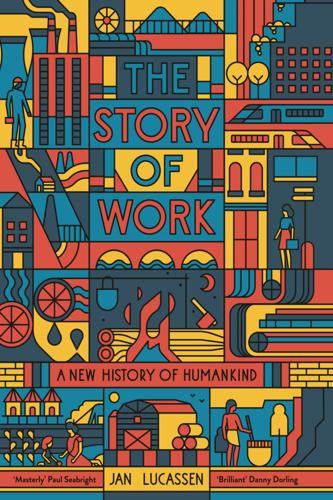
The Story of Work: A New History of Humankind
by
Jan Lucassen
Published 26 Jul 2021
The gain in Western Europe is the upshot of shorter workweeks and longer vacations.19 In Japan, the number of hours worked is much higher due to extreme forms of overtime, with all the associated negative health consequences.20 Whereas for many working people in the North Atlantic work had long been an (admittedly necessary) exception and leisure time had become the rule and the purpose of life, the pendulum now appeared to swing to the other side again. At the same time, as labour came to be considered as the main if not sole source of wealth, a new distinction emerged. Because of the growing role of education, the esteem for white-collar work grew at the expense of blue-collar work, increasingly considered to be purely manual and therefore menial. Yet, this development was far more striking in Europe and Asia than in the US or other white-settler colonies, with their traditional labour shortages.21 We must not lose sight of the fact that this reduction in working time has always concerned wage workers, in particular those working in middle-sized and large companies.

The Age of Surveillance Capitalism
by
Shoshana Zuboff
Published 15 Jan 2019
Industrial capitalism was marked by the specialized division of labor, with its historically specific characteristics: the conversion of craft work to mass production based on standardization, rationalization, and the interchangeability of parts; the moving assembly line; volume production; large populations of wage earners concentrated in factory settings; professionalized administrative hierarchies; managerial authority; functional specialization; and the distinction between white-collar work and blue-collar work. The list is illustrative, not exhaustive, but enough to remind us that industrial civilization was drawn from these expressions of the economic imperatives that ruled industrial expansion. The division of labor shaped culture, psychology, and social experience. The shift from craft to hourly wages created new populations of employees and consumers, men and women wholly dependent on the means of production owned and operated by private firms.